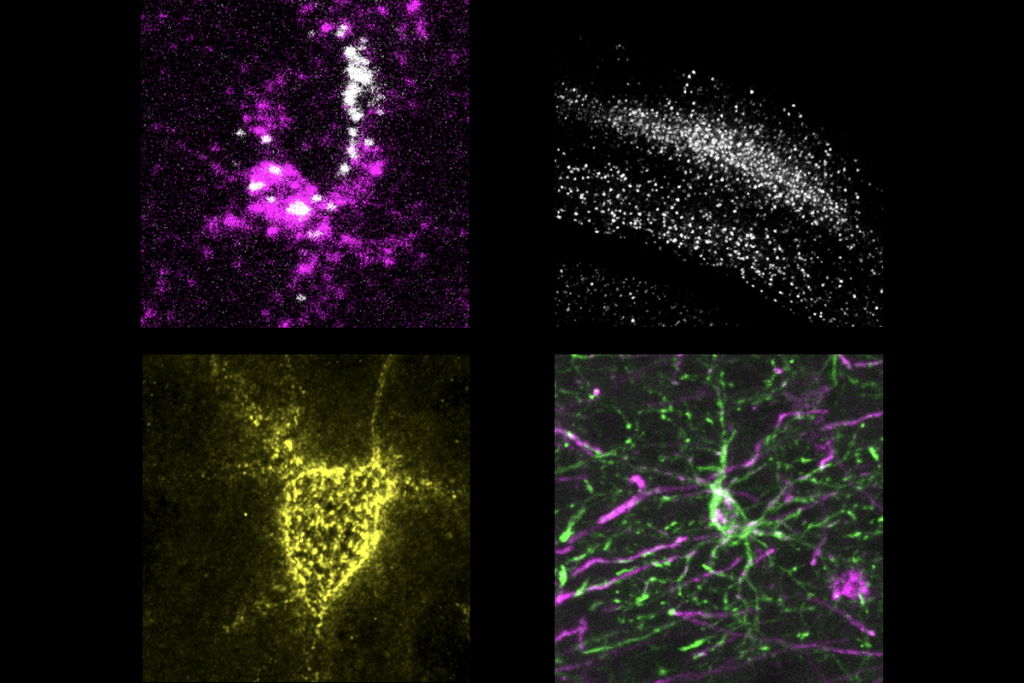New method highlights activity in zebrafish brains
A new technique gives researchers a window into the constellation of neurons that fire as zebrafish larvae swim in a dish.
A new technique gives researchers a window into the constellation of neurons that fire as zebrafish larvae swim in a dish. The work may help researchers understand the relationship between neuronal activity and behavior in conditions such as autism1.
Zebrafish larvae are ideally suited for these sorts of studies because of their translucent bodies and simple nervous systems. The larval brain contains about 100,000 neurons and controls a 5-millimeter-long body — the length of a grain of rice. The larvae use this compact neuronal web to swim around independently, hunting for food and avoiding threats.
Some methods to track the fish’s brain activity require trapping them in gel to keep them still. This entrapment changes their behavior and triggers stress, which can alter neurons’ activity. Other approaches allow researchers to assess activity in freely moving fish, but either involve stimulating them with stress-inducing light or do not clearly pinpoint which neurons are firing.
In the new study, described 14 September in Nature Methods, researchers developed a more precise, less stress-inducing method by taking advantage of a chemically modified version of an enzyme, called phosphorylated ERK, that accumulates in active neurons. Other researchers have used the enzyme to track brain activity, but the new method allows scientists to interpret and compare patterns in whole zebrafish brains.
The researchers exposed zebrafish larvae to various stimuli, such as mustard oil, heat, food and light, and documented their behavior. They then fished the animals out of their dishes and submerged them in formaldehyde. The chemical kills the fish but preserves their enzyme expression.
By applying a fluorescent marker that binds to the enzyme, the researchers could identify the brain areas in which the enzyme was scarcer or more plentiful than it was in control fish. In this way, they pinpointed clusters of neurons that seem to be involved in the fish’s reactions to various stimuli.
To put their findings into context, the researchers created a three-dimensional online atlas of the zebrafish brain called the Z-Brain Atlas, illuminating anatomical features of 899 fish brains with a total of 29 different labels. They combined their own staining data with information from other reference atlases to divide the zebrafish brain into 294 regions. By aligning their experimental images with the atlas, they could determine which brain regions become activated in response to different stimuli.
For instance, combining the atlas with their enzyme analysis, the researchers found that heat, mustard oil, electric shocks and gentle taps on the platform under the dish all activate a brain region called the locus coeruleus.
Researchers can use the atlas to zoom in on a region of interest. They can also compare brain activity in fish from different experiments by aligning their own images with those in the atlas.
The method could reveal how brain activity is altered in zebrafish models of autism and help researchers test the effects of potential autism drugs.
References:
- Randlett O. et al. Nat. Methods Epub ahead of print (2015) Abstract
Recommended reading
Explore more from The Transmitter




